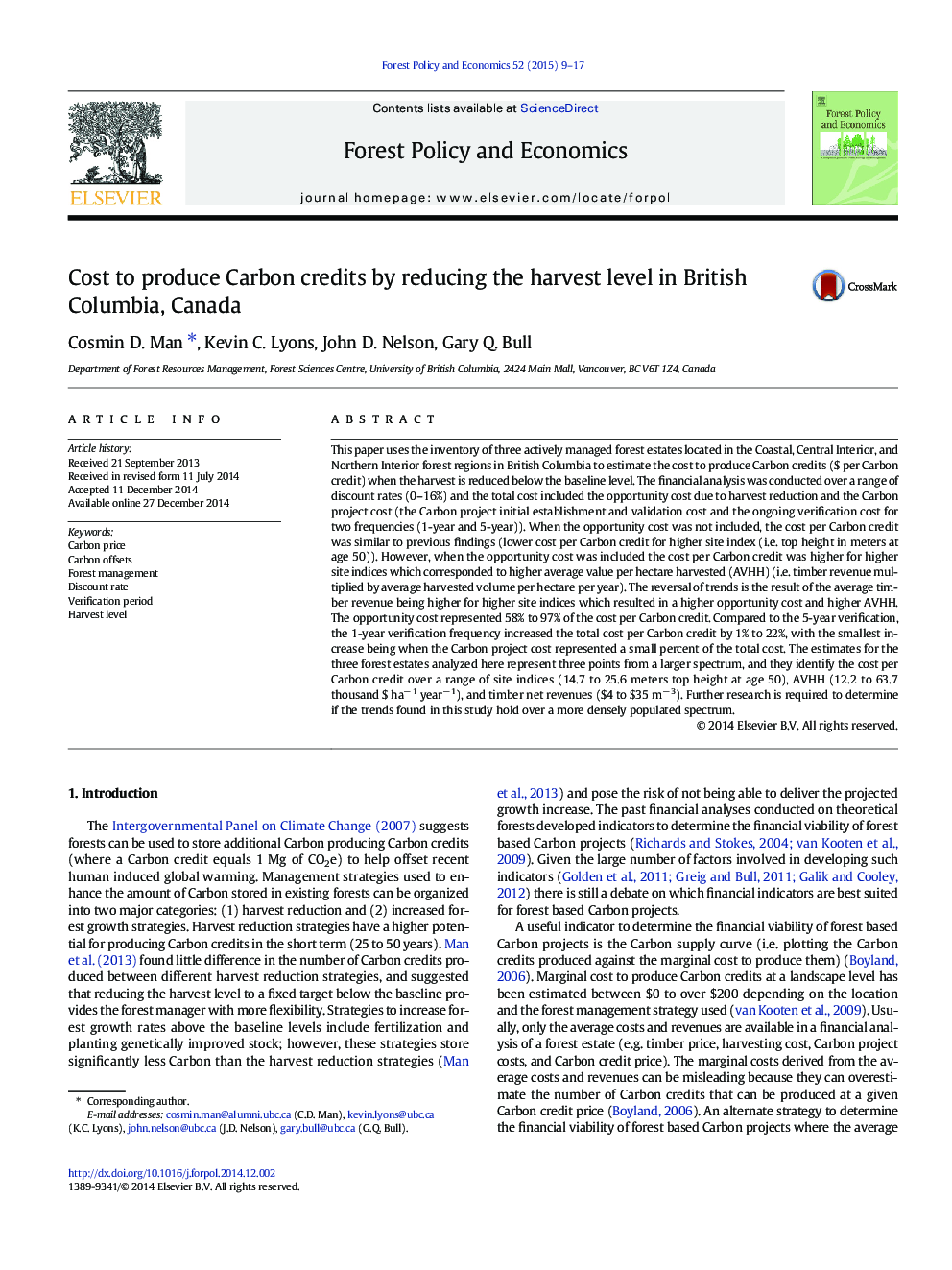| کد مقاله | کد نشریه | سال انتشار | مقاله انگلیسی | نسخه تمام متن |
|---|---|---|---|---|
| 91348 | 159786 | 2015 | 9 صفحه PDF | دانلود رایگان |
• The opportunity cost represents 58% to 97% of the cost per Carbon credit (CCC).
• CCC is higher for higher site productivity when the opportunity cost is included.
• The 1-year verification frequency increases the CCC by 1% to 22%.
This paper uses the inventory of three actively managed forest estates located in the Coastal, Central Interior, and Northern Interior forest regions in British Columbia to estimate the cost to produce Carbon credits ($ per Carbon credit) when the harvest is reduced below the baseline level. The financial analysis was conducted over a range of discount rates (0–16%) and the total cost included the opportunity cost due to harvest reduction and the Carbon project cost (the Carbon project initial establishment and validation cost and the ongoing verification cost for two frequencies (1-year and 5-year)). When the opportunity cost was not included, the cost per Carbon credit was similar to previous findings (lower cost per Carbon credit for higher site index (i.e. top height in meters at age 50)). However, when the opportunity cost was included the cost per Carbon credit was higher for higher site indices which corresponded to higher average value per hectare harvested (AVHH) (i.e. timber revenue multiplied by average harvested volume per hectare per year). The reversal of trends is the result of the average timber revenue being higher for higher site indices which resulted in a higher opportunity cost and higher AVHH. The opportunity cost represented 58% to 97% of the cost per Carbon credit. Compared to the 5-year verification, the 1-year verification frequency increased the total cost per Carbon credit by 1% to 22%, with the smallest increase being when the Carbon project cost represented a small percent of the total cost. The estimates for the three forest estates analyzed here represent three points from a larger spectrum, and they identify the cost per Carbon credit over a range of site indices (14.7 to 25.6 meters top height at age 50), AVHH (12.2 to 63.7 thousand $ ha− 1 year− 1), and timber net revenues ($4 to $35 m− 3). Further research is required to determine if the trends found in this study hold over a more densely populated spectrum.
Journal: Forest Policy and Economics - Volume 52, March 2015, Pages 9–17
